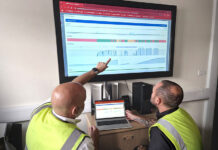
LOMA SYSTEMS, official partner of the BRC Global Standards organisation, is offering advice and expertise to support companies reviewing their inspection equipment following the release of BRC Global Standard for Food Safety Issue 7.
Published on 7th January 2015, the new BRC Global Standard for Food Safety, which includes changes to inspection guidelines, comes into effect from 1 July 2015. After which, 22,000 BRC certificated food manufacturers and processors across 123 countries will need to start preparing for audits against Issue 7.
Recognised as being at the forefront of high performance metal detection, checkweighing and X-ray inspection technology for the global food industry, Loma work closely with BRC, offering guidance to managers and operators at BRC certified sites who may require equipment and inspection process updates.
Tony Bryant, UK Sales Manager at Loma said, “The increasing risks associated with food quality and safety has been underlined by several very high profile scares in the last few years. The BRC Global Standard is used as the benchmark for quality management systems across thousands of manufacturing sites around the world and helps food companies demonstrate their food safety credentials by having robust procedures in place.”
BRC Global Standard for Food Safety is a single, internationally recognised food safety management system and Issue 7 includes a number of recommendations for further improvements to quality management programmes.

With regards to foreign body detection, the changes will tighten the controls of having automated reject systems on inspection systems. The new standards also highlight that where metal detectors are incorporated on conveyors, test pieces should be passed as close as possible to the centre of the metal detector aperture.
In addition, there is an increased focus on the safety of raw ingredients. Supply chains for products have become increasingly complex, often including raw materials from around the world with agents or brokers as intermediaries. The BRC believes this has led to a lack of transparency, especially problematic when there is an issue requiring full traceability of a raw material.
Retailers and Food Service companies now require more information about the source of raw materials used in their products and confidence in the food safety systems operated by those suppliers. As a result, Issue 7 has extended the requirements for traceability to include assurances about the traceability system operated by raw material suppliers.
Tony continues: “These updated regulations are part of the ongoing changes to ensure food is contaminant free. Reflecting the evolving food safety landscape, our comprehensive knowledge and understanding is key to any food factories operating HACCP and BRC regulations, as well as meeting retailers’ Codes of Practice.
“As official partner to BRC Global Standard for Food Safety and working closely with the major retailers, we are ideally placed to help food manufacturers, processors and packers, including raw ingredient producers, meet and even exceed inspection requirements.”












